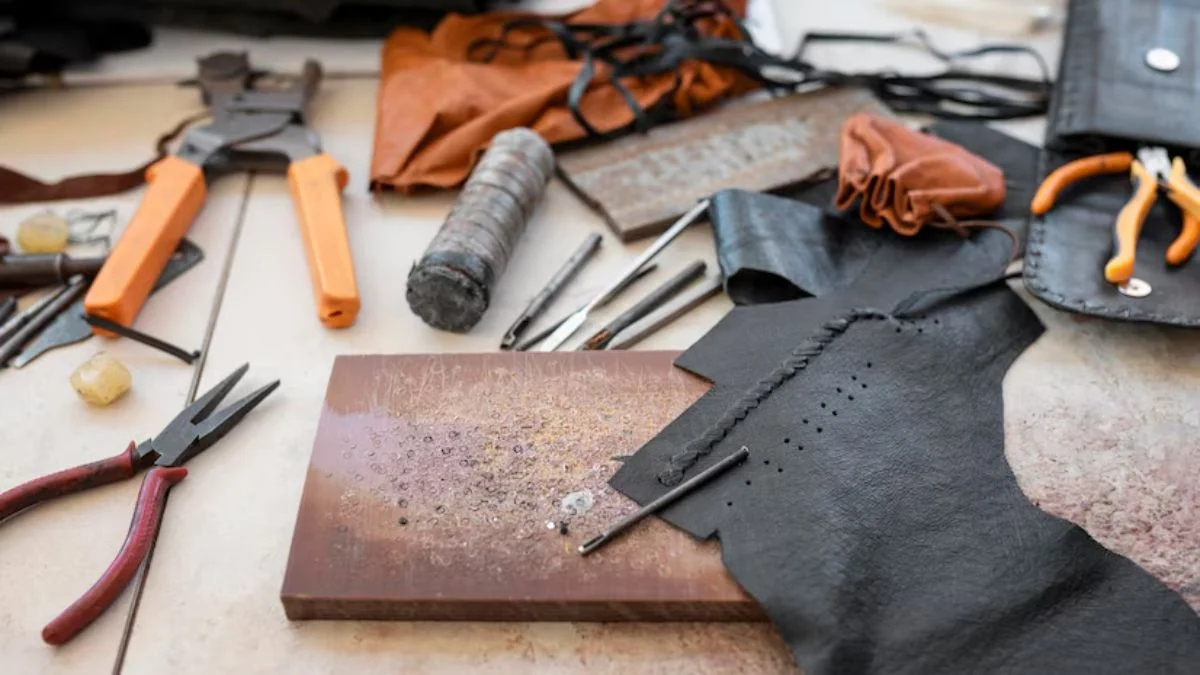With the change in time, the actual taste, demand, and preferences also changes for people. The same thing is applicable in the case of fabrics too. Today, faux leather fabric is demanded by a lot of people. Many use this as synthetic upholstery leather and faux garment leather.
There could be many reasons for this. But one of the most relevant reasons is that people nowadays try to stay away from using any kind of animal-made leather fabrics. Other than being fully vegan, faux leather offers many other values and benefits to users for different purposes.
What Is Faux Leather Fabric?
This is also known as synthetic leather and is a petroleum-based substitute to real leather that is made from animals. While faux leather may have some similar features to that of real leather, there is no need to harm animals to make this robust fabric.
Like real leather fabric, faux leather is soft to touch and feel and is also water-proof. The fabric does not stain easily and can be cleaned without putting in much effort. This makes faux fabric ideal for upholstery leather in homes with children or pets.
How Is Faux Leather Fabric Made?
There is a robust process followed to make faux leather fabric. The whole process is explained below in a set of bullet points.
· Getting the Base Material
Most faux leather makers use cotton or polyester as the base material for synthetic leather fabrics. The types of polyester or cotton used as the base material for faux leather are usually porous and rough. This means that they need to be specially made. In some cases, faux leather producers may also make their own base materials.
· Making the Plastic
Next, faux leather manufacturers make the item that they will need to bind with their base fabric. Here PVC, for instance, is made by combining salt and petrol. The PVC used for this faux leather is usually flexible. This helps the makers to add plastics to this petrol-based item. This helps to make it bind to the base fabric used in faux leather production.
For faux upholstery leather fabric, PU is also used, but the process is a bit more complex. It involves polyols and other different additives. In some cases, polymers are used in PU making. They react to each other and are then correctly processed.
· Binding All the Materials
Now, faux leather makers bind PU or PVC to the selected base textiles. Many unique methods may be used for this, but they normally involve melting the plastic and laying it over the base textile.
· Cutting and Finishing the Fabric
After the plastic is bound to the underlying fabric, it is now time to cut it into the desired shapes and sizes. In many cases, faux leather is sold in the form of long strips. The process used to make this vegan faux leather fabric varies from one manufacturer to another.
Where Is Faux Leather Fabric Produced?
The largest maker of faux leather fabric is China. This country also has the largest market for faux leather fabric items. It also exports these products all over the world to clients in different continents.
More nations are turning towards making these items, and the global demand for faux garment leather products is increasing accordingly. The affordable feature of synthetic leather has continued to drive the popularity of faux leather items, especially in areas where poverty is prevalent.
Choosing from the Types of Faux Leather Fabric
Not knowing which variety to choose can be daunting initially. But take a look at these types and decide accordingly.
· PU Leather
This material is the most affordable type of faux leather present in the market. But, it is less durable and comfortable than other types of leather fabric.
· PVC Leather
PVC leather is a little more durable than its PU version. It is also made in huge quantities when being used as upholstery leather. Many times, this PVC leather has also been known as “poromeric” leather fabric.
· Leatherette
The term “leatherette” mainly refers to a type of faux leather consisting of a fabric base and plastic covering. Both PU leather fabric and PVC leather fabric are examples of this.
· Vegetable Oil Leather
Nowadays, many manufacturers have started to work with vegetable oil leather. In addition to being more eco-friendly, this kind of leather fabric also seems more long-lasting than the PU or PVC leather fabric.
How Is Faux Leather Fabric Used?
Many people do not opt to use real leather due to their strong principles.
Faux upholstery leather is one of the most common synthetic fabrics used in furniture. From sofas to car seats to chairs to tables, all are commonly made with synthetic leather covers. This fabric is also used in various kinds of wall hangings and decorative items.
In the sector of apparel, accessories and outerwear, faux garment leather is widely used in handbags, shoes, gloves, hats, and jackets. Other examples of using faux leather include suitcases, briefcases, watch bands, phone, camera cases, etc.
Conclusion
Faux leather has already captured the market as the best substitute for animal-made leather fabric. From being suitable upholstery leather to synthetic garment leather, these vegan and affordable fabrics are present in different types and are made for many unique purposes. They offer almost all the benefits and features of genuine leather and are thus greatly preferred by people.
If you found this article helpful, click here for more.









